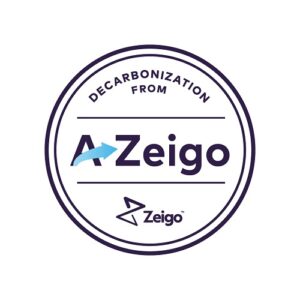As a small or medium-sized enterprise (SME), you’ve probably heard of decarbonization or reducing your carbon emissions. Decarbonization refers to the process of reducing or eliminating carbon dioxide (CO2) emissions, specifically in the context of human activities that contribute to climate change. As an SME, it’s hard to know where to start with decarbonization. Naturally, you’re looking for the carbon reduction strategies with the highest impact. Here are 5 high impact tips to get your business started on its decarbonization journey.
1. Energy Efficiency Upgrades
Using energy more efficiently can majorly reduce your carbon emissions. For highest impact, it’s important to conduct an energy audit, and measure your carbon emissions effectively. Identify the areas of high consumption, and what alternatives you can implement.
SMEs can consider switching to energy-efficient appliances, lighting, and HVAC systems. Smart technologies, which are designed to gather, process, and analyze data to make intelligent decisions or provide automated and adaptive responses, can also help automate energy usage and optimize efficiency.
Educating your workforce in energy-saving practices can also promote greater energy efficiency.
At Zeigo, we help companies of all sizes reduce their carbon emissions through our suite of sustainability software. Zeigo Activate is tailor-made for SMEs, enabling them to track progress, set goals, get a customized action plan, and reduce their carbon emissions.
When suggesting energy efficient measures to reduce carbon emissions, Zeigo Activate also gives estimates of how much each measure would reduce. To meet the Paris Agreement goal of limiting global warming to 1.5°C, each person should emit less than 2.3 tons of CO2 every year.
2. Renewable Energy Adoption
Using renewable energy to power your business significantly reduces your carbon emissions. Whether installing on-site renewable energy or purchasing from external sources, adopting renewable energy decreases your dependence on electricity derived from fossil fuels like coal or natural gas.
Not only does this benefit you financially in the long-term, but it also provides reliable energy for the future.

Read about the financial benefits of decarbonizing
Read the full articleSwitching to a renewable energy source can help your business reduce emissions by up to your total scope 2, which is your electricity usage.
3. Carbon Emissions Tracking
Measuring your carbon emissions effectively can be extremely impactful in your business. Perhaps it may not seem obvious at first, but by tracking and analyzing your carbon emissions, you will begin to deeply understand your business’ carbon footprint. By understanding these emissions, you’ll be able to implement the most effective ways to reduce them.
Tracking and measuring impacts awareness within the organization but also enables you to report your emissions. In certain states and countries, this can ensure you’re abiding with regulations and can get you tax benefits once you start implementing decarbonization strategies.

Read our in-depth on why and how to measure your carbon emissions
Read the full article4. Carbon Offset
A logical follow up step to carbon emissions tracking, is offsetting your carbon emissions. Carbon offsetting allows businesses to compensate for their greenhouse gas emissions by investing in projects or activities that reduce or remove an equivalent amount of carbon dioxide (CO2) from the atmosphere.
If your company is producing a certain amount of carbon per year, you can plant a number of trees or invest in fuel-efficient cookstoves for developing countries, which would reduce the equivalent amount of carbon. Note, carbon offsetting initiatives have had mixed results, so a thorough analysis of what you’re investing in and the actual impact is absolutely key.

If chosen well, this approach can literally offset some or all of your carbon footprint. However, adopting meaningful decarbonization strategies alongside use of carbon offsets is likely to be more cost effective in the long run.
5. Sustainable Supply Chain Practices
Scope 3 emissions are the greenhouse gas emissions that occur as a result of your business’ activities, but are from sources not owned or directly controlled by that organization. These also count as your carbon emissions, and need to be analyzed and reduced. Sustainable supply chain practices can be game-changing for certain organizations which are part of or on the receiving end of the supply chain.
To get started in your scope 3 emissions analysis, assess your current suppliers’ environmental practices, and implement a system which includes sustainability when choosing future suppliers. In addition, assess the carbon emissions caused by moving the product (where relevant) from suppliers’ facilities to yours.

Once you’ve evaluated your supply chain’s carbon footprint, you can implement methods to reduce it. These strategies are wide-ranging, from circular economy principles, sustainable packaging and local sourcing, to choosing renewable energy-fueled suppliers. On the software side, Zeigo by Schneider Electric provides a host of supply chain decarbonization solutions: from communication services, to engaging and educating suppliers on decarbonization, and building an enterprise program to achieve targets.
Decarbonization can feel overwhelming, particularly for SMEs who have small teams.
Remember: you don’t have to do it alone. Zeigo Activate is decarbonization software designed specifically for SMEs. The software can help you track your emissions, and will build a customized decarbonization action plan tailored to your business’ targets.
